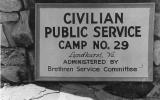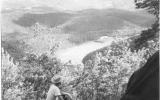CPS Unit Number 029-01
Camp: 29
Unit ID: 1
Operating agency: BSC
Opened: 5 1942
Closed: 1 1944
Workers
Total number of workers who worked in this camp: 322
-
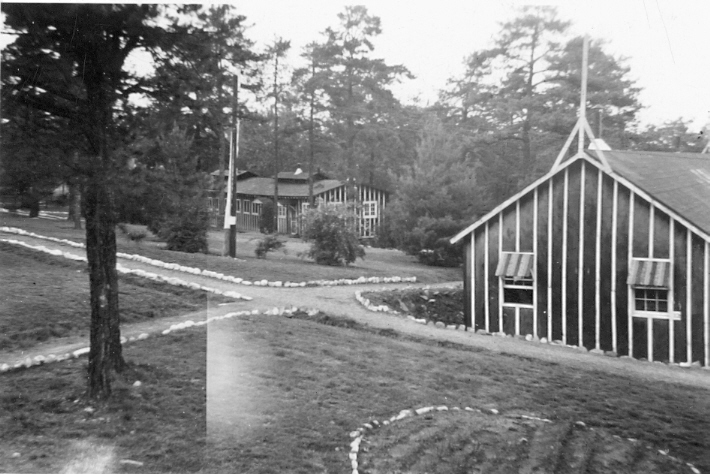 CPS Camp No. 29, Lyndhurst Virginia.Campus Scene.Digital Image © 2011 Brethren Historical Library and Archives. All Rights Reserved.
CPS Camp No. 29, Lyndhurst Virginia.Campus Scene.Digital Image © 2011 Brethren Historical Library and Archives. All Rights Reserved. -
 CPS Camp No. 29Lyndhurst, Virginia.Digital Image © 2011 Brethren Historical Library and Archives. All Rights Reserved.
CPS Camp No. 29Lyndhurst, Virginia.Digital Image © 2011 Brethren Historical Library and Archives. All Rights Reserved. -
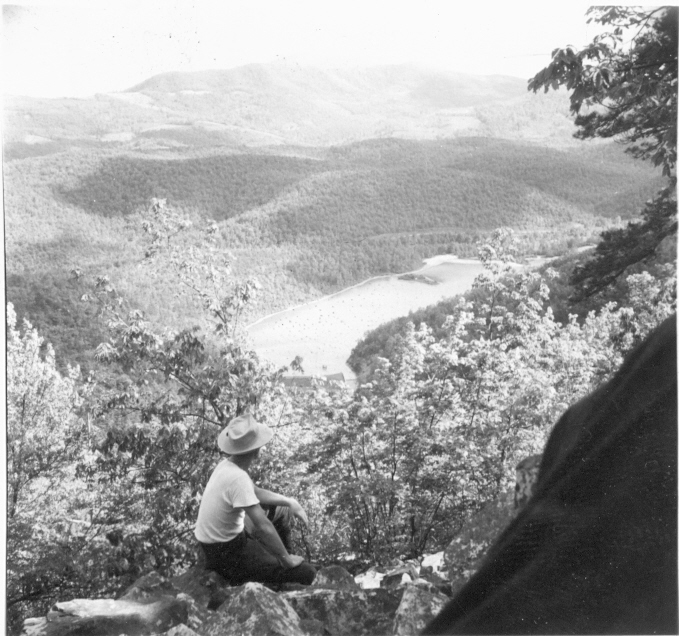 CPS Camp No. 29, Lyndhurst Virginia.Lake Sherando view from mountain top.Digital Image © 2011 Brethren Historical Library and Archives. All Rights Reserved.
CPS Camp No. 29, Lyndhurst Virginia.Lake Sherando view from mountain top.Digital Image © 2011 Brethren Historical Library and Archives. All Rights Reserved. -
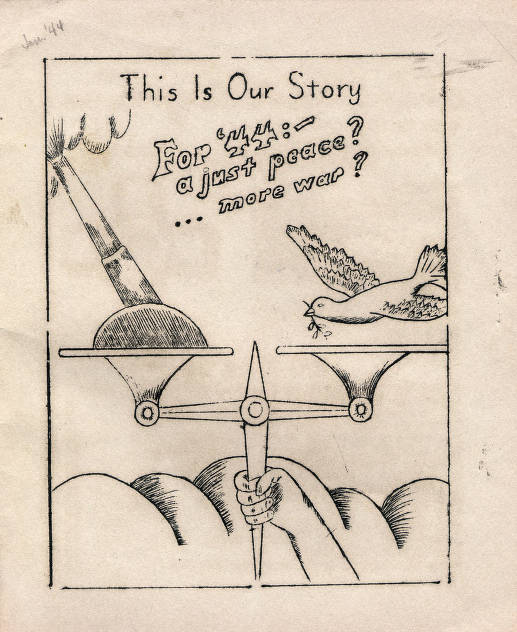 CPS Camp No. 29This Is Our Story was a newsletter published by the men at Camp 29 from March 1943 to January 1944.Digital Image from American Friends Service Committee: Civilian Public Service Records (DG002), Swarthmore College Peace Collection, Swarthmore, Pennsylvania
CPS Camp No. 29This Is Our Story was a newsletter published by the men at Camp 29 from March 1943 to January 1944.Digital Image from American Friends Service Committee: Civilian Public Service Records (DG002), Swarthmore College Peace Collection, Swarthmore, Pennsylvania
CPS Camp No. 29, a Forest Service base camp located in Lyndhurst, Virginia near The Blue Ridge Parkway and operated by the Brethren Service Committee, opened in May 1942 and closed in January 1944. Assignees made improvements along the Blue Ridge Parkway.
This Forest Service base camp was located in Lyndhurst, Virginia near The Blue Ridge Parkway. The Parkway stretched between the Great Smoky Mountains National Park in Tennessee and the Shenandoah National Park in Virginia.
Director: Samuel Harley, Earl Garver
In Brethren camps, the men when entering CPS tended to report a mix of religious affiliations, with about half citing affiliation with Brethren groups.
Men in Brethren camps also reported on entry into CPS a variety of occupations. On average, they had completed 12.22 years of education, with nearly forty percent having enrolled in or graduated from college, or enrolled in graduate or postgraduate work. (Sibley and Jacob p. 171-72)
Assignees worked with the National Park Service to improve the Blue Ridge Parkway. Men graded and seeded road banks to prevent erosion and deterioration. They also cleared brush and constructed rail and stone fences.
A quote from the camp newspaper describes the labor “. . .lime, and fertilizer, and seed are spread. . .. After the seed has been raked in, straw or some similar material is strewn as mulch. This is held on the steep banks by brush and poles. In some cases provision is made to carry rain water from the road by ditches or wooden chutes”. (Bob Coolidge, “On the Parkway”, in Eisan p. 85-86)
Formal classes were held at Lyndhurst and, according to Eisan, the participation of sixty men was “active”.
The men published a camp paper Kitchen Scents in June 1943. From March 1943 through January 1944, the men published This is Our Story.
Some personal recollections of his brief time spent at Lyndhurst can be found in J. Henry Dasenbrock, To the Beat of a Different Drummer: A Decade in the Life of a World War II Conscientious Objector. Winona, MN: Northland Press of Winona, 1989, pp. 72-74.
For further discussion of educational activities and camp life in Brethren base camps, see Leslie Eisan, Pathways of Peace: A History of the Civilian Public Service Program Administered by the Brethren Service Committee. Elgin, IL: Brethren Publishing House, 1948, Chapter 4, pp. 112-187.
For general information on CPS camps see Albert N. Keim, The CPS Story: An Illustrated History of Civilian Public Service. Intercourse, PA: Good Books 1990.
See also Mulford Q. Sibley and Philip E. Jacob, Conscription of Conscience: The American State and the Conscientious Objector, 1940-1947. Ithaca, NY: Cornell University Press, 1952.
Swarthmore College Peace Collection, Camp periodicals database.

